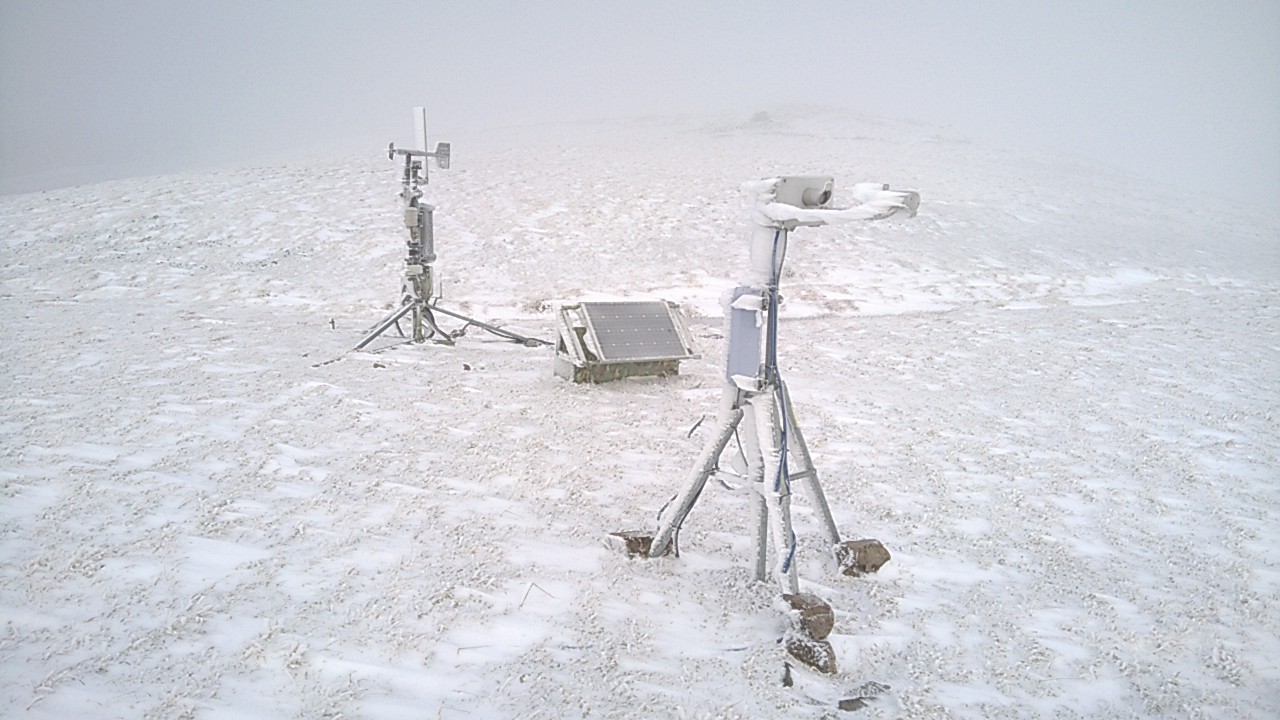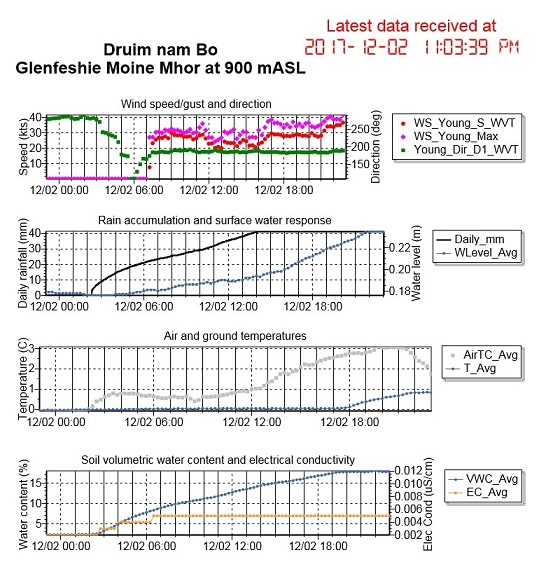Power availability is the big challenge at 900 m elevation. The Wildland mountain observatory on Druim nam Bo benefits from a 60 W solar panel and a wind turbine generator, with 220 Ah of battery capacity.
Ben Pickering’s disdrometer, pictured here in the foreground, needs 1 Amp of current, so sometimes there isn’t enough to go around (for long). A low voltage disconnect (LVD) stops the power to the disdrometer when reserves get too low – leading to this icing-up spectacle on 19th November – while the weather station continues unabated. Since then, conditions have improved, so hopefully laser radiation is once again analyzing the precipitation – solid and liquid – as it falls. Latest data are here.


